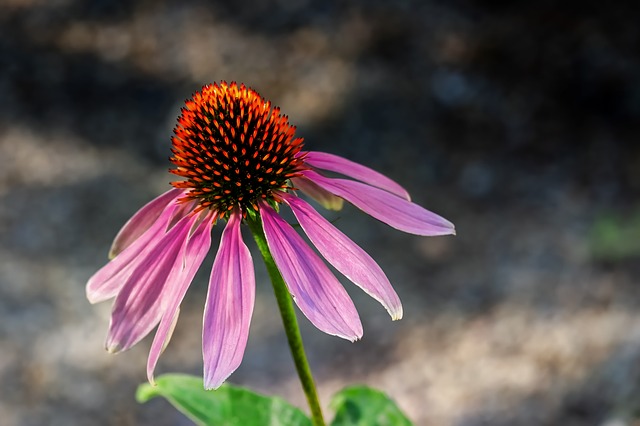 |  |  |   |   |
  |  |
Purple coneflower is a perennial plant, 50-100 cm tall, with a short, divided root, from which erect, pink stems rise. Lower leaves in a rosette, elongated ovate, hard, hairy. The leaves of the stem are oppositely arranged, lanceolate-ovate with a pointed tip, hairy. Flower baskets at the ends of the stems, large, up to 15 cm in diameter, consist of red-brown central tubular flowers and marginal pink-purple petals. The fruit is a grayish-brown seed. The plant blooms from July until autumn, produces seeds in August-October.
For medicinal purposes, flowers are collected during the flowering period, rhizomes are dug in late autumn. Inflorescences and leaves are collected early in the morning, as soon as the dew has dried. Dry in well-ventilated and dark places. The rhizomes are cleaned, cut into pieces and dried in the sun or in dryers at a temperature of 40-60C. Store in a dry and dark place. It is also common to squeeze juice from fresh plants, add alcohol and store in the refrigerator.
All parts of the plant contain polysaccharides (heteroxylans, arabinorhamnogalactans), essential oils in flower caskets up to 0.5%, stipes up to 0.35%, roots up to 0.23%, enzymes, macroelements (potassium, calcium) and microelements (selenium, cobalt, silver, molybdenum, zinc, manganese, etc.). The main component of the essential oil is non-cyclic sesquiterpentines. The roots also contain inulin (<6%), glucose (<7), glycosides (echinoglycoside), echinacoside, phytosterols, organic acids (palmitic acid, linoleic acid, cerotinic acid), phenolic carbonate acids (chicoric acid, ferulic acid, coumaric acid and caffeic acid), fatty acids, betaine (0.1%), resins (2%), polyamides, antioxidants (echinocin, echinolone), cis-1,8-pentadecadiene.
Medicinal significance
Purple coneflower preparations strengthen immunity by activating cells of the immune system (phagocytes), and cis-1,8-pentadecadiene has pronounced anti-oncology activity. All parts of Purple coneflower have a wide spectrum of pharmacological properties and are used to treat many autoimmune diseases (hepatitis, nephritis, rheumatoid arthritis), bacterial and viral diseases (influenza, herpes, smallpox, poliomyelitis), as well as to treat various oncological pathologies. Scientific studies have determined the activity of the plant against 15 different pathogenic bacteria and 2 pathogenic fungi. Flower juice is effective in enhancing blood clotting and wound healing. The plant is also able to regenerate skin cells and prevent infections from developing in wounds.
The plant can increase arterial blood pressure, so it is recommended for hypotensive patients, respectively, for people who suffer from hypertension, the plant is not recommended at all.
In folk medicine, Purple coneflower is most often used to treat colds, flu, blood poisoning, and bladder diseases. Externally, to treat urticaria, burns, herpes virus and other skin diseases. Purple coneflower is used to prevent the effects of heavy metal salts and fungicides, in case of liver diseases and diabetes. Purple coneflower preparations have a suppressive effect on streptococci, Escherichia coli and influenza virus.
Purple coneflower can be made into poultices, decoctions, drunk as tea, and extracts made into oil. The oil can be used as an antiseptic on wounds, added to baths. It is also worth using in massages, smear the chest and back with this oil, it will help to cope with colds. The oil can also be used for a relaxing head massage.
For men
The plant is used to treat prostatitis, prostate adenoma and nephritis. The plant has a stimulating effect on the CNS, enhancing male potency.
